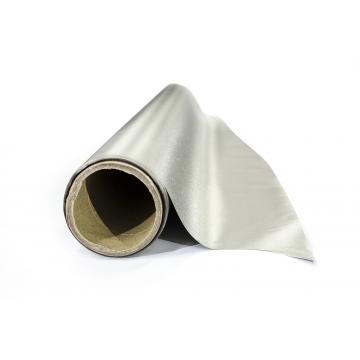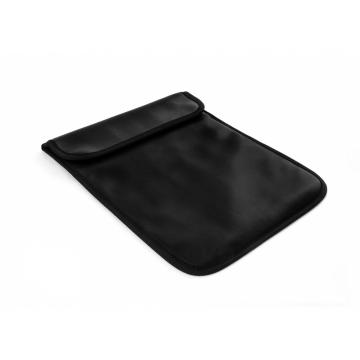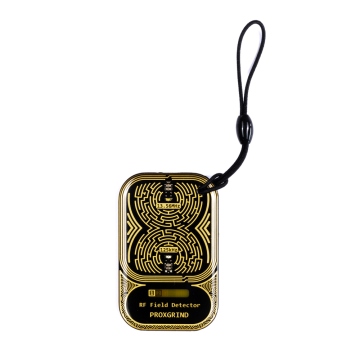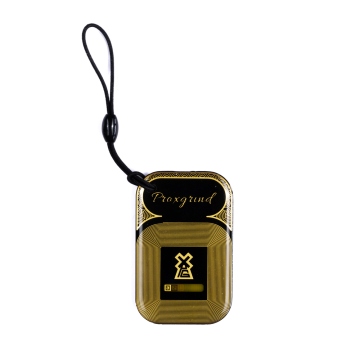RF signal detector 125kHz / 13,56Mhz - passive
Miniature, passive radio frequency signal detector 125kHz / 13.56Mhz
The device is used to detect RF signals with a frequency of 125kHz and 13.56Mhz. The detector is passive (does not require a power supply) It is a printed circuit board with electronics, which is encased in hard clear resin, is equipped with a loop for attaching, for example, to keys. The detector is really very easy to use, the detector just needs to be attached to the device, if the device emits a signal with a frequency of 125kHz / 13,56Mhz, one of the diodes will flash, which determines the frequency of the signal.
... More
The device is used to detect RF signals with a frequency of 125kHz and 13.56Mhz. The detector is passive (does not require a power supply) It is a printed circuit board with electronics, which is encased in hard clear resin, is equipped with a loop for attaching, for example, to keys. The detector is really very easy to use, the detector just needs to be attached to the device, if the device emits a signal with a frequency of 125kHz / 13,56Mhz, one of the diodes will flash, which determines the frequency of the signal.
... More
Product description
The detector can be used to check and verify the functionality of shielding elements such as shielding cases, fabrics, mobile phone cases, cards or wallets.
In order for the RF signal to be picked up and detected, the RF detector must be in the vicinity of the device within approx. 1cm of the signal source. The distance to detect the signal is directly proportional to the radiation power of the device. The detector does not detect the signal in space or over long distances and it is always necessary to bring it close to the device emitting the signal.
The13.56 MHz frequency is used in various applications such as contactless identification, wireless communication, wireless charging and many others. The most common applications include:
RFID (Radio Frequency IDentification) - A technology that enables contactless identification and tracking of objects using radio waves. RFID (Near Field Communication) - A wireless technology that enables fast and simple data transmissions over short distances (up to a few centimetres). It is used, for example, for mobile payments, to connect devices (e.g. between a smartphone and a speaker) or to secure access to objects. Wireless charging - The 13.56 MHz frequency is also used to wirelessly charge some devices, such as smartwatches or mobile phones.
Industrial applications - In industry, the 13.56 MHz frequency is used for wireless communication and control of certain devices, for example in the automotive or energy industries.
The125 kHz frequency is used in RFID technology for contactless identification and tracking of objects. RFID tags transmit a signal at this frequency and can be used, for example, for tracking inventory, manufacturing processes, or in building access security. Access control systems - The 125 kHz frequency is used in building access security systems where RFID cards or tags are used. These cards or fobs have an embedded RFID tag that allows access to secure areas. Distance measurement - 125 kHz is used in some distance measurement applications such as parking sensors. These sensors transmit a signal at 125 kHz and receive a reflected signal from an obstacle. Based on the time between sending and receiving the signal, the distance to the obstacle is calculated. Wireless Communications - The 125 kHz frequency is also used in some wireless communication applications, such as wireless speakers, or some types of wireless headphones. However, the use of this frequency for wireless communications is not widespread because it offers limited throughput and range.
Package contents: detector with loop.
In order for the RF signal to be picked up and detected, the RF detector must be in the vicinity of the device within approx. 1cm of the signal source. The distance to detect the signal is directly proportional to the radiation power of the device. The detector does not detect the signal in space or over long distances and it is always necessary to bring it close to the device emitting the signal.
The13.56 MHz frequency is used in various applications such as contactless identification, wireless communication, wireless charging and many others. The most common applications include:
RFID (Radio Frequency IDentification) - A technology that enables contactless identification and tracking of objects using radio waves. RFID (Near Field Communication) - A wireless technology that enables fast and simple data transmissions over short distances (up to a few centimetres). It is used, for example, for mobile payments, to connect devices (e.g. between a smartphone and a speaker) or to secure access to objects. Wireless charging - The 13.56 MHz frequency is also used to wirelessly charge some devices, such as smartwatches or mobile phones.
Industrial applications - In industry, the 13.56 MHz frequency is used for wireless communication and control of certain devices, for example in the automotive or energy industries.
The125 kHz frequency is used in RFID technology for contactless identification and tracking of objects. RFID tags transmit a signal at this frequency and can be used, for example, for tracking inventory, manufacturing processes, or in building access security. Access control systems - The 125 kHz frequency is used in building access security systems where RFID cards or tags are used. These cards or fobs have an embedded RFID tag that allows access to secure areas. Distance measurement - 125 kHz is used in some distance measurement applications such as parking sensors. These sensors transmit a signal at 125 kHz and receive a reflected signal from an obstacle. Based on the time between sending and receiving the signal, the distance to the obstacle is calculated. Wireless Communications - The 125 kHz frequency is also used in some wireless communication applications, such as wireless speakers, or some types of wireless headphones. However, the use of this frequency for wireless communications is not widespread because it offers limited throughput and range.
Package contents: detector with loop.
| Weight | 0.012 kg |
Specification
Production manual
Related products
-
 H94 Shielding cloth blocking EM signal – Faraday shield
from 0.537 € / cm
H94 Shielding cloth blocking EM signal – Faraday shield
from 0.537 € / cm
from 0.437 € without VATin Stock400094Product detail -
 P1 Black wallet with RFID protection
from 29.542 € / pc.
P1 Black wallet with RFID protection
from 29.542 € / pc.
from 24.018 € without VATin Stock400494Product detail -
 T1 Shielding case for the tablets to protect against interception, localization and monitoring up to 10 inches - black
from 69.825 € / pc.
T1 Shielding case for the tablets to protect against interception, localization and monitoring up to 10 inches - black
from 69.825 € / pc.
from 56.769 € without VATin Stock400093Product detail -
 H122 Safety cover for contactless card blocking RFID and NFC signal
from 1.074 € / pc.
H122 Safety cover for contactless card blocking RFID and NFC signal
from 1.074 € / pc.
from 0.873 € without VATin Stock400122Product detail











